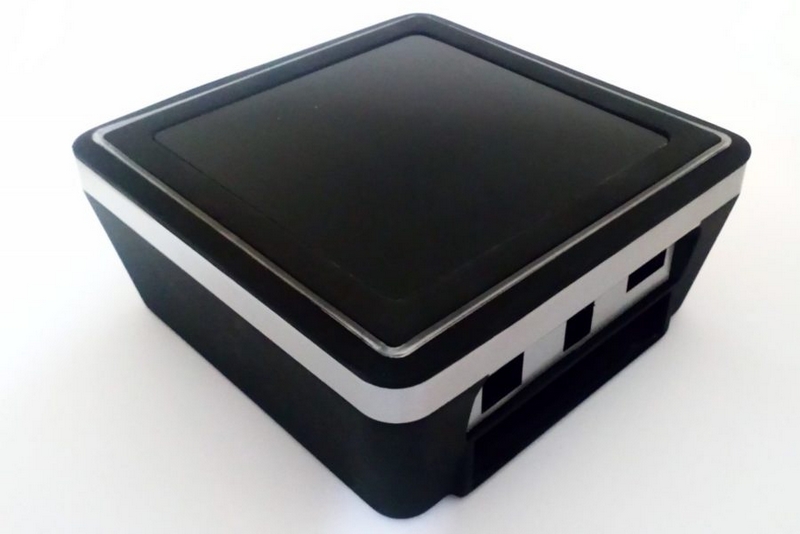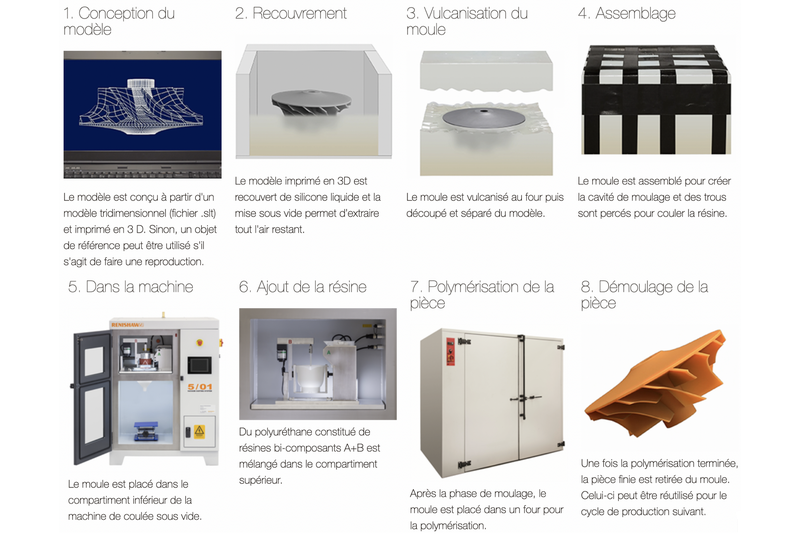Prototyping
ICPS Prototyping
You need a prototype.Show us your project. We will realise it.
We will realize your project from your ideas!
You will receive a high-quality prototype, faithful to the plastic injection at the end of the process.
We will realize your project from your ideas!
You will receive a high-quality prototype, faithful to the plastic injection at the end of the process.

3D PRINTING
- Three stereolithography 3D printers,
- One printer capable of printing technical materials such as: TPU, PEEK, PEI (also called ULTEM), carbonfibre, graphite, Kevlar, FPE, polycarbonate, fibreglass, POM (also called DELRIN), PolyVyniliDene Fluoride (PVDF),
- One Polyjet,
- One selective laser sintering machine which allows the printing of polyamides and TPUs

VACUUM CASTING
Our production line for the vacuum casting allows us to manufacture small and medium-sized parts in a material that simulates polymer injection.
- Using a master model, we create a silicone mold. Then, we make castings in numerous materials, standard and technical, such as: PEHD / PP / PS / ABS / ABS-PC / PA / PC transparents.
- On demand, we manufacture parts in different reinforced materials such as: metallic powder, fiberglass, mica, ceramics, and others according to your needs.
Equipment used for rapid prototyping
3D Scanner
We use a 3D scanner to effectuate reverse engineering projects, with speed and precision.
Special-purpose Machines
After the design phase, we also create special machines in our atelier. These single-copy machines respond to the specific needs of an industrial firm.
Paint Booth
We use our Paint Booth to put finishing touches on our manufactured parts: sanding, coating (varnish or lacquer), and soft-touch varnish.
Machining
We offer machining operations with milling machines and lathe machine available to us through our local partners. We also do sheet-metal work and laser cutting in short delays.
Why prototyping ?
- Functional and mechanical validation of a part, during the design phase of its manufacturing.
- Testing of parts in real conditions, because the prototype is practically identical to the part.
- Mechanical, esthetic, or ergonomic validations in very short delays.
- Market-launch time of the product reduced to a few weeks.
- Manufacture of parts and assemblies without assembly (or monobloc assembly).
- Elimination of manufacturing errors by direct and exclusive exploitation of the 3D file.
- Manufacture of small series of plastic parts for pre-production, their distribution, or their promotion.
- Use of prototypes for the production of technical catalogs and presentation models.
